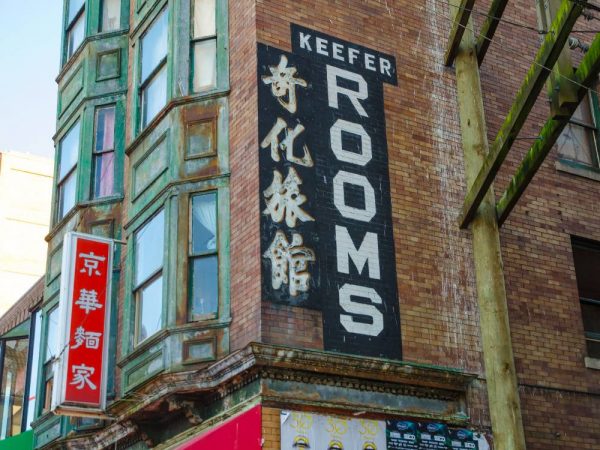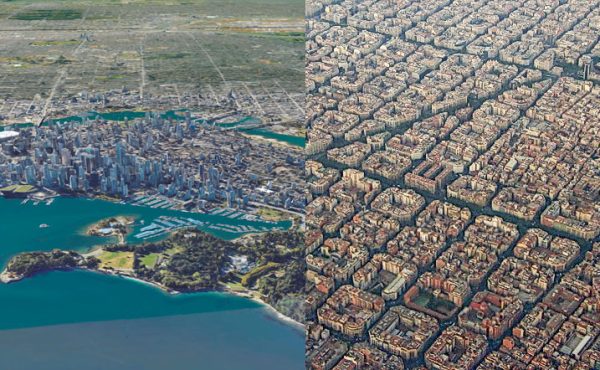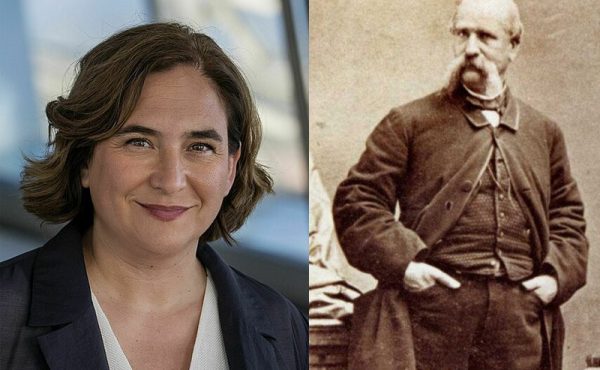
A new report sounds the alarm on the housing crisis for immigrant seniors in and around Vancouver’s Chinatown.
Many seniors expect to live out the remainder of their lives there in the urban community. But the limited homes that exist are precious and may also be precarious.
There are units in deteriorating, century-old buildings with steep staircases, poor ventilation, and a lack of formal support for senior care. Buildings may be sold, displacing their residents. Culturally focused care facilities are in high demand with long waitlists. And the seniors’ population is only expected to grow; according to census data, the population of people over age 55 in the area is on track to double in the next 20 years. And there are not enough homes to house them.
The report, authored by Louisa-May Khoo with data analysis by Carmut Me, is the result of research funded by the City of Vancouver and the Chinatown Society Heritage Buildings Association. It surfaces long sought-after data to capture the scale of what it’s like for a senior to find a home in Chinatown, from the scarcity of units to the ever-lengthening housing waitlists.
“It’s not just supply that’s lacking—it’s suitable supply and then it’s culturally suitable supply,” said Khoo, a Ph.D. candidate, and public scholar at the University of British Columbia’s urban planning school.
This is a demographic that easily “falls through the cracks,” she says.
The majority of units in the area do not have senior care services. Many seniors are monolingual in Chinese dialects, with little to no ability to communicate in English.
The Yarrow Intergenerational Society for Justice, which works with Chinatown seniors, adds that there is a significant number of seniors who have incomes less than $15,000 a year. Some are undocumented or haven’t yet been citizens for 10 years, so they don’t qualify for the Old Age Security Pension. They may not have family nearby or have working-class families unable to provide financial support.
These multiplying marginalities of race, age, and class pushes them “further down the line in terms of visibility” when it comes to policy solutions, says Khoo.
Surveying the small supply
Khoo says the report’s data was possible thanks to consolidating data from BC Housing, the City of Vancouver, and various Chinatown societies. These partners — along with others that included Vancouver Coastal Health, the provincial seniors advocate, and the social service agency S.U.C.C.E.S.S. — lent input to the study.
The data revealed that there are 12,788 units of affordable housing in and around Chinatown and the nearby Downtown Eastside. The affordable housing in the study area consists of single-room occupancy units in old buildings and non-market units. Most Chinese seniors live in Chinatown proper and the adjacent neighbourhood of Strathcona, with a small population in the Downtown Eastside.
Of those total homes, 5,269 units are designated for seniors, with a minimum age requirement typically set at 55 years.
Of those senior homes, 1,577 units are in buildings with some Chinese community affiliation, ranging from the neighbourhood’s Chinese benevolent societies to Chinese care homes.
Of those senior homes with Chinese affiliation, only 504 units offer services for seniors. This includes facilities for independent living with limited service, supportive housing, assisted living, and long-term care. The ones that offer more care include services like therapists, nutritionists, social workers, nursing teams, cultural programming, and Chinese meal plans — all of which can be transformative for a senior’s well-being.
Who holds the housing?
Chinese benevolent societies have played a founding presence in Vancouver’s Chinatown, and their advocacy for the rights of Chinese citizens dates back to their vocal fight against the head tax and later, the restrictive Immigration Act. Today, their focus is less on settlement and more on cultural and social programming for their aging members. Having hung onto their real estate in the neighbourhood, they still have a total of about 800 units of housing. Only 390 of them are designated for seniors.
Despite the benevolent societies’ deep historical connections in Chinatown, the housing they provide is not well-designed for seniors to live out the rest of their lives. The historic units were originally built for young bachelors to temporarily stay while navigating a new country.
There is a lack of information available about the accessibility of the housing, says Khoo. While some of the buildings have elevators, they may not be wheelchair accessible. Many of these buildings are over 100 years old and would be considered “run-down,” according to the study.
That being said, benevolent society housing boasts incredibly affordable rents, ranging from $80 to $420 a month. These spaces are generally not advertised publicly, but vacancies are communicated by word of mouth. The Chinatown benevolent society members have strong social ties, based on family clans and kinship from coming out of the same region in China. So the collection of rents is never an issue, the report found.
Spaces in formal facilities that offer services have long waitlists. Depending on which facility, average waits range from one month to one year for assisted living and two months to two years for long-term care.
“It’s already so little,” said Khoo, who stresses the need to protect the existing stock from being sold or converted for some other purpose than Chinese seniors housing.
One of the triggers of the report was last year’s initial sale of Vancouver Grace Seniors Home in the neighbourhood. The announcement left families in fear about the chaotic and impending displacement until the province stepped in to acquire the building.
The facility had 70 units of assisted living for Chinese seniors. Losing them would’ve meant losing 14 percent of the area’s senior homes with Chinese affiliation and services — demonstrating that the loss of any one building would be a significant blow to the limited stock available.
A problem made invisible
This report is “long overdue,” says Beverly Ho, operations manager at the Yarrow society.
While the data isn’t surprising, Ho says having an official source to point to is important because the voices of Chinese seniors “aren’t really validated unless there’s some kind of academic study.”
Ho has seen a lack of understanding about what Chinese seniors go through firsthand.
In the low-income neighbourhood’s food lineups on the street, Chinese seniors have been pushed, yelled at, and spat at, all of which increased during the pandemic. She says anti-Asian xenophobia in mainstream media contributes to a false impression that the seniors are rich and not actually in need. “When they cover topics about Chinese people, it’s usually about real estate or wealthy Chinese,” she said.
Yarrow runs a culturally focused grocery program for seniors, crucial in a neighbourhood whose food resources mostly aren’t attuned to their needs. Ho says Chinese seniors have given her cheese and western sausages they’ve received.
Despite the challenges, Chinatown still remains a draw for Chinese seniors as a place to live the rest of their lives. It’s a rare place where there are organic cultural and community supports. Shops and services are within walking distance and people can conduct business in their home language. Plus there are community hubs to do activities and meet other Chinese seniors.
“A lot of [seniors] grew up in war and famine or really oppressive regimes,” said Ho. “They’re definitely resourceful and rely on each other.”
In times of crisis, seniors will reach out to people in the community from caretakers, and friends to service organizations.
But there’s another side to this: those organic ties can work so smoothly that they hide the formal systemic supports that seniors require but aren’t being provided.
A “campus of care”
The huge challenge of inadequate, limited housing and culturally focused senior care in Chinatown will require partnerships between governments and other agencies, says Khoo.
The report offers three recommendations.
First, to protect and improve the limited stock of housing that currently exists.
Second, to develop new seniors housing with culturally focused care services. Right now, seniors have to navigate a fragmented array of services. A “one-stop shop” would help, says Khoo, and it has to be attuned to seniors’ linguistic and cultural needs.
Third, to envision the neighbourhood as a “campus of care.” While the term includes the presence of medical facilities and housing for different life stages and arrangements, it also refers to the neighbourhood itself as a senior-friendly environment and building on many of the elements that are already part of the neighbourhood’s draw: intergenerational activity, recreational activity, and commercial activity.
There have been decades of conversations about revitalizing Vancouver’s Chinatown and Khoo stresses that senior care plays a significant part. Many Chinatowns around the world have had their residents displaced by gentrification, becoming what she wrote in the report as a “postcard pretty shell of a tourist attraction.”
While Vancouver’s Chinatown has had its share of gentrification, it still has a significant live-in community of seniors.
“Investing in seniors’ living environment actually alleviates health-care costs and health-care consumption,” said Khoo. “We need to see the urban and health as correlated, how the living environment has significant impacts on health, emotional, physical and mental well-being. You can’t see it as zero-sum.”
…
Christopher Cheung is a reporter at The Tyee, where this story originally appeared on Feb. 8, 2023.




